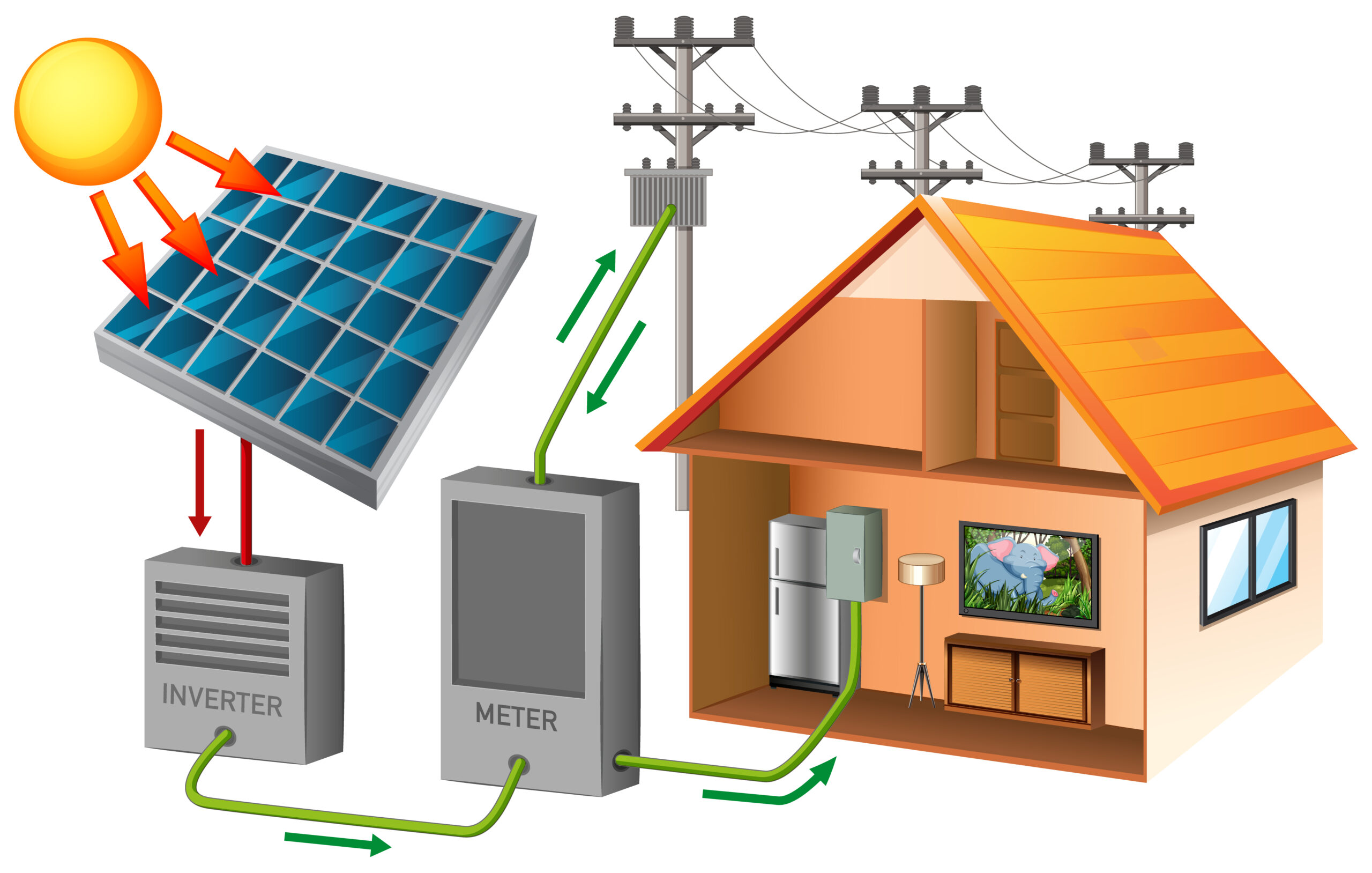The journey towards sustainable energy sources has led to the increased adoption of solar power systems. Among the critical components of a solar power setup is the MPPT Solar Charge Controller. These innovative devices play a crucial role in maximizing the efficiency of solar panels and batteries. In this comprehensive guide, we’ll delve into the intricacies of MPPT Solar Charge Controllers, their functionalities, benefits, and more.
Introduction
MPPT Solar Charge Controllers have revolutionized the way solar energy is harnessed and stored. They serve as the bridge between solar panels and batteries, ensuring that the energy conversion process is optimized for maximum efficiency. In this guide, we’ll explore the ins and outs of these controllers, shedding light on their operation, advantages, and frequently asked questions.
What is an MPPT Solar Charge Controller?
Understanding the Core Concept
An MPPT Solar Charge Controller, which stands for Maximum Power Point Tracking, is a sophisticated electronic device designed to optimize the conversion of solar energy into usable electricity. Unlike conventional charge controllers, MPPT controllers leverage advanced algorithms to continuously track and adjust the solar panel’s operating point, ensuring that it operates at the “maximum power point” for optimal energy harvest.
How Does an MPPT Solar Charge Controller Work?
Unveiling the Operation
MPPT Solar Charge Controllers employ cutting-edge technology to enhance the efficiency of solar power systems. These controllers use a dynamic algorithm to determine the optimal voltage and current at which the solar panel should operate, maximizing the energy harvested. By maintaining the panel at its maximum power point, MPPT controllers ensure that the maximum available energy is transferred to the batteries, resulting in improved charging rates and overall system performance.
Advantages of MPPT Solar Charge Controllers
A Boost to Solar Efficiency
The implementation of MPPT Solar Charge Controllers offers several compelling advantages. Firstly, these controllers significantly increase the overall energy yield of solar panels. By extracting the maximum available power from the panels, MPPT controllers enhance system efficiency and shorten the charging time. Additionally, these controllers excel in low-light conditions, making them ideal for areas with unpredictable weather patterns. The ability to support higher voltage panels and adapt to changing environmental conditions sets MPPT controllers apart from their PWM counterparts.
Factors to Consider When Choosing an MPPT Solar Charge Controller
Making the Right Choice
Selecting the appropriate MPPT Solar Charge Controller is crucial for optimizing the performance of your solar power system. Consider factors such as the controller’s maximum input voltage, current capacity, and compatibility with your solar panels and batteries. It’s also essential to assess the controller’s efficiency rating and available monitoring features. By choosing a controller that aligns with your system’s specifications, you can ensure maximum energy utilization and longevity.

Installation Guide for MPPT Solar Charge Controllers
Step-by-Step Instructions
Installing an MPPT Solar Charge Controller involves several key steps to ensure its proper functioning. Here’s a step-by-step guide to help you through the process:
- Gather Tools and Materials: Collect the necessary tools and components, including the controller, solar panels, batteries, cables, and mounting hardware.
- Mount the Controller: Choose a suitable location for the controller, preferably in a well-ventilated area. Mount the controller securely using the provided hardware.
- Connect Solar Panels: Connect the solar panels to the controller using appropriate cables, ensuring proper polarity and tight connections.
- Connect Batteries: Attach the batteries to the controller, adhering to the recommended voltage and polarity settings.
- Configure Settings: Access the controller’s interface and configure settings such as battery type, charging mode, and voltage parameters.
- Monitor Performance: Regularly monitor the controller’s performance and adjust settings if necessary to optimize energy conversion.
By following these steps, you can ensure a successful installation and seamless integration of the MPPT Solar Charge Controller into your system.
MPPT Solar Charge Controller vs. PWM Controller
Unleashing the Power of MPPT
MPPT Solar Charge Controllers and Pulse Width Modulation (PWM) controllers are both utilized to regulate the charging of batteries in solar power systems. However, MPPT controllers offer distinct advantages that set them apart. Unlike PWM controllers, which operate at a fixed voltage, MPPT controllers adjust their voltage and current to maintain the optimal power point of the solar panel. This dynamic tracking results in higher energy yield, particularly in situations with low sunlight or varying environmental conditions.
Extending Battery Lifespan with MPPT Controllers
Efficient Battery Management
MPPT Solar Charge Controllers play a vital role in prolonging the lifespan of batteries within a solar power system. By delivering the appropriate charging voltage and current based on the battery’s state of charge, MPPT controllers prevent overcharging and undercharging. This precise control helps mitigate battery degradation and extends their overall lifespan, reducing the need for frequent battery replacements and enhancing the economic viability of solar installations.
Monitoring and Maintenance of MPPT Charge Controllers
Ensuring Longevity
Proper monitoring and maintenance are essential for the optimal performance and longevity of MPPT Solar Charge Controllers. Regularly inspect the controller for signs of wear, damage, or corrosion. Clean the controller’s surface and ensure proper ventilation to prevent overheating. Additionally, utilize any available monitoring features to track the controller’s efficiency and energy production. By implementing routine maintenance practices, you can maximize the lifespan and efficiency of your solar power system.
Common Myths About MPPT Solar Charge Controllers
Separating Fact from Fiction
As with any innovative technology, there are misconceptions surrounding MPPT Solar Charge Controllers. Let’s dispel some common myths:
- Myth: MPPT controllers are only effective in sunny climates.
- Fact: MPPT controllers excel in both sunny and low light conditions, adapting to varying weather patterns.
- Myth: MPPT controllers are too complicated to install and operate.
- Fact: While installation requires care, the benefits far outweigh the initial setup effort.
- Myth: MPPT controllers are not cost-effective.
- Fact: The increased energy harvest and battery lifespan extension justify the investment over time.
Clearing up these misconceptions ensures a more accurate understanding of the capabilities and advantages of MPPT Solar Charge Controllers.
The Future of Solar Energy and MPPT Controllers
Trends and Innovations
The future of solar energy is bright, with ongoing innovations shaping the industry. MPPT Solar Charge Controllers continue to evolve, incorporating advanced algorithms and data analytics to optimize energy harvesting further. Integration with smart home systems and grid management solutions is also on the horizon, allowing users to harness solar power more intelligently and efficiently. As technology progresses, MPPT controllers will play a pivotal role in realizing a sustainable and greener future.

MPPT Solar Charge Controllers in Off-Grid Systems
Powering Remote Locations
Off-grid solar power systems, often used in remote locations, rely on MPPT Solar Charge Controllers to maximize energy utilization. These controllers enable efficient charging of batteries even when sunlight is limited. Off-grid setups benefit from the advanced tracking capabilities of MPPT controllers, ensuring that every available ray of sunlight is converted into usable energy. This makes them indispensable for providing electricity in areas without access to conventional power sources.
Case Studies: Real-World Performance of MPPT Controllers
Success Stories
Real-world examples highlight the transformative impact of MPPT Solar Charge Controllers. In a residential setting, a homeowner observed a 25% increase in energy yield after upgrading to an MPPT controller. Similarly, a commercial solar installation experienced a significant reduction in charging time, leading to enhanced operational efficiency. These success stories underscore the practical benefits of adopting MPPT technology in diverse applications.
Exploring Different Brands and Models
Top Manufacturers
The market offers a variety of MPPT Solar Charge Controllers from reputable manufacturers. Some of the prominent brands include:
- SolarEdge: Known for its innovative power optimization technology and compatibility with intelligent energy solutions.
- OutBack Power: Offers versatile controllers suitable for various applications, from residential to industrial systems.
- Morningstar: Recognized for its reliable and durable controllers designed for off-grid and remote setups.
- Victron Energy: Offers a range of controllers with advanced features, ideal for both residential and commercial systems.
Exploring the offerings of these manufacturers can help you find an MPPT controller that aligns with your specific needs and preferences.
Conclusion
Embracing solar power efficiency is a journey that begins with understanding the capabilities of MPPT Solar Charge Controllers. These innovative devices have transformed the way solar energy is harnessed and utilized. By optimizing energy conversion, maximizing energy harvest, and extending battery lifespan, MPPT controllers play a pivotal role in realizing the potential of solar power systems. Whether for residential, commercial, or off-grid applications, MPPT Solar Charge Controllers offer a reliable and efficient solution for harnessing the sun’s energy.
